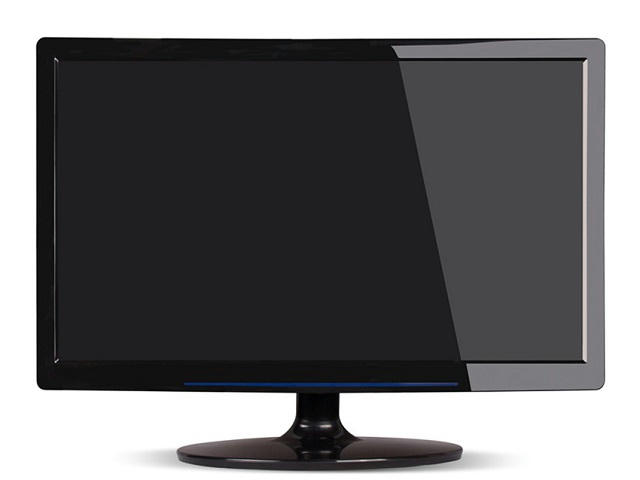- Fri Dec 19, 2014 10:58 am
#56307
Which type of television or monitor do you prefer or even favor?
CRT display:

Since it's a rather poor quality image, here's a stock photo of some random one:

(My favorite, and that picture is a picture of one I own)
Some information about how it works:
A CRT has a fluorescent glass screen which glows once exposed to radiation. These monsters are heavy, and relatively fragile. As a matter of safety, the face is typically made of thick lead glass to be highly shatter-resistant and to block as many X-ray emissions as possible. Because of this, they may cause cancer. It is not guaranteed, but it is always smart to keep your distance a few feet away from them and staying in front of it is the safest, since the rear and sides are usually built for ventilation. Don't worry, if you follow that guideline you will be safe. In television sets and computer monitors, the entire front area of the tube is scanned repetitively and systematically in a fixed pattern called a raster. An image is produced by controlling the intensity of each of the three electron beams, one for each additive primary color (red, green, and blue) with a video signal as a reference. In all modern CRT monitors and televisions, the beams are bent by magnetic deflection, a varying magnetic field generated by coils and driven by electronic circuits around the neck of the tube. Most may notice a "flickering" effect when looking at a CRT monitor, some can find it irritating with lower rate monitors running at 60, 30, or 29.979 refreshes per second. These monsters also consume far more electricity than the newer LCD and LED displays, and cost far more to manufacture. But they are infinitely sharper with any resolution, and are almost dead on with color. These monitors are no longer made.
LCD:

Some information about how it works:
(Liquid Crystal Display) A display that uses rod-shaped molecules (liquid crystals) that flow like liquid and bend light. Unenergized, the crystals direct light through two polarizing filters, allowing a natural background color to show. When energized, they redirect the light to be absorbed in one of the polarizers, causing the dark appearance of crossed polarizers to show. The more the molecules are twisted, the better the contrast and viewing angle. A blurring filter effect makes displaying non-native resolutions a blurry, ugly site, and these monitors are more dull with colors. They consume little electricity, and don't emit very much radiation at all. These monitors are still made.
LED display:

Some information about how it works:
An LED display is a flat panel display, which uses an array of light-emitting diodes as a video display. An LED panel is a small display, or a component of a larger display. They are typically used outdoors in store signs and billboards, and in recent years have also become commonly used in destination signs on public transport vehicles or even as part of transparent glass area. LED panels are sometimes used as form of lighting, for the purpose of general illumination, task lighting, or even stage lighting rather than display. A blurring filter effect makes displaying non-native resolutions a blurry, ugly site, and these monitors are more dull with colors. They consume little electricity, and don't emit very much radiation at all. These monitors are still made.
Just keep in mind, Liquid Crystal and Light Emitting Diode displays are almost the same thing, LED's are just LCD's with LED back lights.
My favorite is without a doubt Cathode Ray Tube displays.
Feel free to post a picture of your monitor!
CRT display:

Since it's a rather poor quality image, here's a stock photo of some random one:

(My favorite, and that picture is a picture of one I own)
Some information about how it works:
A CRT has a fluorescent glass screen which glows once exposed to radiation. These monsters are heavy, and relatively fragile. As a matter of safety, the face is typically made of thick lead glass to be highly shatter-resistant and to block as many X-ray emissions as possible. Because of this, they may cause cancer. It is not guaranteed, but it is always smart to keep your distance a few feet away from them and staying in front of it is the safest, since the rear and sides are usually built for ventilation. Don't worry, if you follow that guideline you will be safe. In television sets and computer monitors, the entire front area of the tube is scanned repetitively and systematically in a fixed pattern called a raster. An image is produced by controlling the intensity of each of the three electron beams, one for each additive primary color (red, green, and blue) with a video signal as a reference. In all modern CRT monitors and televisions, the beams are bent by magnetic deflection, a varying magnetic field generated by coils and driven by electronic circuits around the neck of the tube. Most may notice a "flickering" effect when looking at a CRT monitor, some can find it irritating with lower rate monitors running at 60, 30, or 29.979 refreshes per second. These monsters also consume far more electricity than the newer LCD and LED displays, and cost far more to manufacture. But they are infinitely sharper with any resolution, and are almost dead on with color. These monitors are no longer made.
LCD:

Some information about how it works:
(Liquid Crystal Display) A display that uses rod-shaped molecules (liquid crystals) that flow like liquid and bend light. Unenergized, the crystals direct light through two polarizing filters, allowing a natural background color to show. When energized, they redirect the light to be absorbed in one of the polarizers, causing the dark appearance of crossed polarizers to show. The more the molecules are twisted, the better the contrast and viewing angle. A blurring filter effect makes displaying non-native resolutions a blurry, ugly site, and these monitors are more dull with colors. They consume little electricity, and don't emit very much radiation at all. These monitors are still made.
LED display:

Some information about how it works:
An LED display is a flat panel display, which uses an array of light-emitting diodes as a video display. An LED panel is a small display, or a component of a larger display. They are typically used outdoors in store signs and billboards, and in recent years have also become commonly used in destination signs on public transport vehicles or even as part of transparent glass area. LED panels are sometimes used as form of lighting, for the purpose of general illumination, task lighting, or even stage lighting rather than display. A blurring filter effect makes displaying non-native resolutions a blurry, ugly site, and these monitors are more dull with colors. They consume little electricity, and don't emit very much radiation at all. These monitors are still made.
Just keep in mind, Liquid Crystal and Light Emitting Diode displays are almost the same thing, LED's are just LCD's with LED back lights.
My favorite is without a doubt Cathode Ray Tube displays.
Feel free to post a picture of your monitor!
Last edited by VAIMAHDO on Fri Dec 19, 2014 2:32 pm, edited 1 time in total.
This is where I die.














 - By viinasieni
- By viinasieni